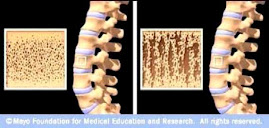Abstract
Preventing falls and fall-related fractures in the elderly is an objective yet to be reached. There is increasing evidence that a supplementation of vitamin D and/or of calcium may reduce the fall and fracture rates. A vitamin D-calcium supplement appears to have a high potential due to its simple application and its low cost. However, published studies have shown conflicting results as some studies failed to show any effect, while others reported a significant decrease of falls and fractures. Through a 15-year literature overview, and after a brief reminder on mechanism of falls in older adults, we reported evidences for a vitamin D action on postural adaptations - i.e., muscles and central nervous system - which may explain the decreased fall and bone fracture rates and we underlined the reasons for differences and controversies between published data. Vitamin D supplementation should thus be integrated into primary and secondary fall prevention strategies in older adults.
Conclusions
Falls
in the elderly, as well as fall-related adverse outcomes such as low
trauma bone fractures, are events that could be prevented.
Epidemiological studies conducted over the past 15 years provide an
increasing number of arguments in favor of an action of vitamin D on
muscles and CNS. Vitamin D improves postural balance, propulsion and
also executive functions and navigation abilities among older adults.
Vitamin D supplementation thus not only determines gait performance, but
also prevents the occurrence of falls and their complications among
older adults. Mixed data regarding the absence of effect of vitamin D
and calcium supplementation are mainly due to the fact that some
confounders were not taken into account, but also to the baseline serum
vitamin D concentration on initiation of treatment, as a low serum
vitamin D concentration appears to be associated with better efficacy.
The prescription of at least 800 IU of vitamin D daily in insufficient
elderly subjects is a simple intervention that should be incorporated
into new strategies for postural rehabilitation, primary and secondary
fall prevention, strength training, integration of body schema,
automation of gait and adaptation to the environment.
For the entire study, click here: http://www.ncbi.nlm.nih.gov/pmc/articles/PMC2959005/


